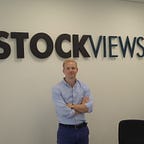Calculated Gambles vs Lucky Breaks
How to Build Them
If you happen to be stranded on a rail platform for thirty minutes — a euphemism for ‘travelling’ in Southern Rail parlance — you should tune in to a set of inspirational podcasts from NPR entitled “How I Built This”.
It is a collection of interviews with some of the latest and greatest entrepreneurs, including (but not limited to): Joe Gebbia of AirBnB, Sara Blakely of Spanx, Jim Koch of Sam Adams beer, Herb Kelleher of Southwest Airlines, Yvon Chouinard of Patagonia, the Warby Parker founders, Seth Goldman of Honest Tea and our very own Sir Richard Branson. Inevitably there is “survivor bias”, but there are coincident factors present in all the success stories. These offer salient lessons, even if you are launching an equity research platform, even in the age of Pokemon GO.
The sine qua non of building a successful business is an unflinching devotion to product quality or value for money. The tales of Steve Jobs’ obsessive attention to detail over the dimensions and form of the iphone are legendary, but he was not alone. There is a wonderful moment when Yvon Chouinard recalls that the single thing that made him happiest was knowing that anyone buying a Patagonia jacket would be unlikely ever to have to purchase another, such was the quality of his product. Indeed, Patagonia even slowed production in their early years to ensure quality was kept to standard.
The second imperative is to spot, and to believe in, a gap in the market. Seth Goldman (Honest Tea) was running in Central Park and wanted a low sugar drink to recharge his energy levels. There was nothing to buy. Today it is a massive category. The foursome who founded Warby Parker could not understand why it was so expensive to buy a pair of prescription glasses until they analysed the structure of the market and appreciated the grip of the Essilor/Hoya duopoly.
Third among the necessary qualities is determination, and a refusal to take ‘no’ for an answer. Sara Blakely stood next to the stands displaying her brand new Spanx product for a year in order to give the impression of consumer interest. She also, without permission, rearranged displays in department stores to ensure her products were not in ‘Lingerie’ but next to the tills, as she always felt the purchase decision wasn’t linked to lingerie. She still owns 100% of her business.
The fourth requirement is employee happiness. At Patagonia, Yvon was terrified of losing good staff. Not only did he encourage young mothers to bring their children into work, he later created a first-class onsite nursery. He also encouraged employees to go surfing during lull periods.
Innovation is also essential. When Jim Koch was raising equity to expand Sam Adams’ production, he didn’t want to use investment banks as he was (rightly) suspicious of cronyism and cost. Instead, he de facto invented crowd funding by offering drinkers the chance to buy 35 shares for $15/share via coupons printed on the back of a six-pack. 130k people wrote back with $65mln. This was 1986.
Sixth, perhaps most importantly, the great entrepreneurs are not motivated by profit. The near-universal trait across all podcasters was a fundamental sense they were doing something worthwhile or fixing something very broken. This helped them to believe in the utility of the product and its likelihood of success, even when times were tough. Possibly the best example was Herb Kelleher’s four-and-a-half-year court fight to get Southwest off the ground. In the end, in 1969, when the company was about to go under, he promised to conduct litigation and to pay court costs out of his own pocket. Today, Southwest is the largest airline in the world and has spawned a host of copycats emboldened by the trail he blazed.
StockViews, a new startup in the equity research landscape, has founding principles that adhere to many of the golden rules mentioned above. There is an obsessive focus on quality, meritocracy and transparency which emanates from founders Tom, Sandeep and Thomas.
We believe the gap in the market exists in providing the best single stock coverage in the €1–10bln part of the equity market. Not only is this area more likely to contain inefficiencies due to more limited analyst coverage but also the quality of research in this area is likely to suffer. Regulation is bringing about massive cuts tothe research payment pool, inevitably leading to less analysts overall, with the best of those increasingly focused on the larger market cap companies, given corporate relationships and historic business models.
Furthermore StockViews analysts are ‘set free’ from the constraints of sector coverage, not beholden to company management or corporate/trading relationships, allowing them freedom in where to apply their analytical expertise. What is more their time and motivations are aligned with trying to find the best ideas. There is no marketing merry-go-round or an opaque bonus structure to game. Very simply they spend their time researching into companies that look to be mispriced. Via a points based salary band system, which incorporates the quality and alpha of their ideas, they benefit from a meritocratic pass through of our subscription revenue. In essence we are aligning a fair incentive scheme with our clients’ own goals while trying to provide value.
The overarching message from “How I Built This” is that there is no short cut. As the saying goes “no gain without pain”; a deeply unfashionable concept in today’s world of instantaneous success. With sensible investment (more of that in the next post), determination and patience, success isn't guaranteed but it is much more likely.
Will we build it? Watch this space…
